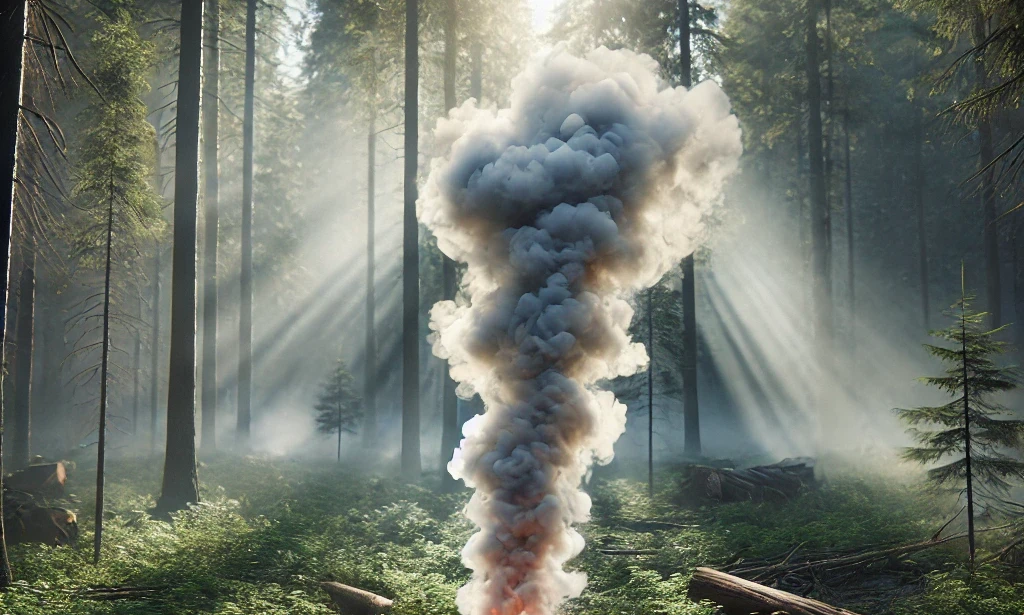Smoke is a fascinating and often misunderstood phenomenon. Whether rising from a campfire, a cigarette, or an industrial chimney, smoke is more than just a wispy cloud—it’s a complex mixture of gases and tiny particles. It can be beautiful, harmful, or even useful, depending on how it's created and used. Let’s dive into the science, dangers, and surprising uses of smoke.
What Is Smoke?
Smoke is the result of incomplete combustion, meaning that something is burning, but not all of it is turning into heat, light, or gas. Instead, tiny particles and chemicals are released into the air, forming the visible cloud we recognize as smoke. The exact composition of smoke depends on what’s burning, but it often contains:
Carbon dioxide (CO₂) and carbon monoxide (CO) – Common gases produced by fire.
Water vapor – A byproduct of combustion.
Ash and soot – Tiny solid particles that give smoke its color.
Volatile organic compounds (VOCs) – Chemicals that can be harmful to breathe in.
The Good, the Bad, and the Ugly of Smoke
The Good: Useful Applications of Smoke
Believe it or not, smoke has some beneficial uses! Throughout history, people have harnessed smoke for:
Food Preservation – Smoking meats and fish helps prevent spoilage while adding a delicious flavor.
Insect Repellent – Smoke can drive away mosquitoes and other pests.
Ceremonial and Religious Practices – Many cultures use incense or sacred smoke in rituals.
Fire Detection – Smoke alarms save lives by detecting fires early.
The Bad: Health Risks of Smoke Exposure
Unfortunately, smoke isn’t always harmless. Inhaling smoke, especially over long periods, can lead to serious health problems. Some common issues include:
Respiratory Problems – Smoke irritates the lungs and can trigger asthma or bronchitis.
Heart Disease – Long-term exposure can increase the risk of heart conditions.
Cancer – Certain chemicals in smoke, especially from cigarettes, are carcinogenic.
Wildfire smoke is particularly dangerous because it contains a mix of toxins from burning vegetation, plastics, and other materials.
The Ugly: Environmental Impact
Smoke pollution is a major global issue. Industrial emissions, vehicle exhaust, and large-scale fires contribute to:
Air Pollution – Smog and haze reduce visibility and harm ecosystems.
Climate Change – Some smoke particles, like black carbon, contribute to global warming.
Acid Rain – Smoke from burning fossil fuels can lead to acid rain, which damages forests and waterways.
How to Reduce Smoke Exposure
If you want to avoid the harmful effects of smoke, here are some tips:
Use Air Purifiers – Helps remove smoke particles from indoor air.
Avoid Burning Trash – Many materials release toxic chemicals when burned.
Stay Indoors During Wildfires – Close windows and use masks if air quality is poor.
Quit Smoking – One of the best ways to protect your health.
Final Thoughts
Smoke is a powerful force in nature and human life. While it has practical uses, it also carries significant risks for health and the environment. Understanding smoke helps us appreciate its role in the world while taking steps to minimize its dangers.
What are your thoughts on smoke? Have you ever experienced its good or bad effects? Let’s discuss!


Exactly 💯
You must be logged in to post a comment.